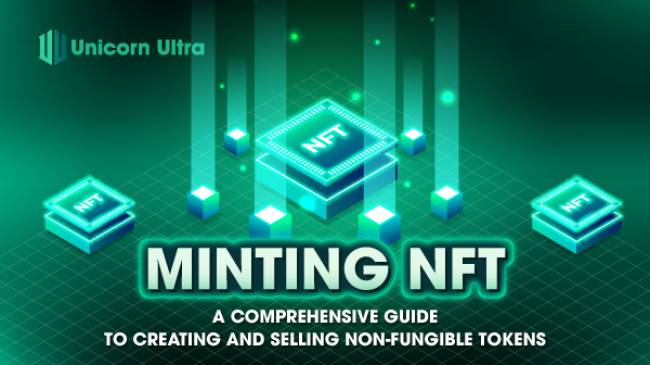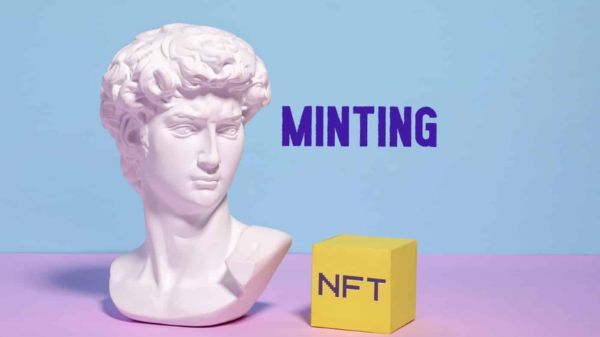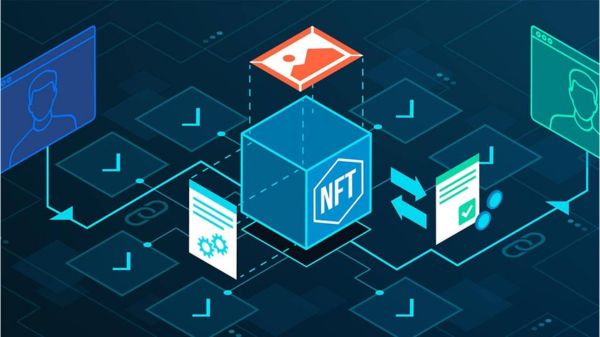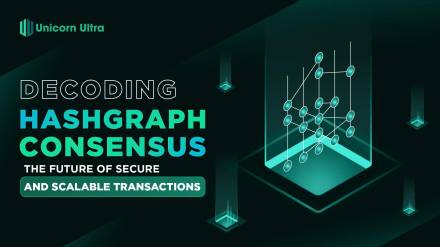In recent years, the emergence of non-fungible tokens (NFTs) has revolutionized the digital art and collectibles market. Artists, creators, and collectors worldwide have been captivated by this new form of digital ownership. One crucial aspect of NFTs is the process of minting, which involves creating and tokenizing unique digital assets. In this blog post, we will explore what is minting NFTs, how it works, the steps involved, the time it takes, the benefits of minting, and whether it's possible to do it for free.
Table of Contents
What is Minting NFT?
What is minting NFT? Minting an NFT refers to the process of creating a unique digital asset and tokenizing it on a blockchain network. Unlike cryptocurrencies such as Bitcoin or Ethereum, which are fungible and can be exchanged on a one-to-one basis, NFTs are non-fungible, meaning each token has its distinct characteristics and value. NFTs can represent various digital assets, including artworks, music, videos, virtual real estate, and even virtual pets.

How Does NFT Minting Work?
The process of minting an NFT involves a few key steps. Firstly, the digital asset, whether it's an image, video, or any other form of media, needs to be created. Once the asset is ready, it is uploaded to a blockchain platform that supports NFTs, such as Ethereum or Binance Smart Chain. The asset is then tokenized, which involves creating a unique token with associated metadata that describes its properties, ownership, and other relevant information. This token is stored on the blockchain, establishing verifiable ownership and authenticity of the digital asset.
How to Mint an NFT?
To mint an NFT, you will typically need to follow these steps:
- Choose a blockchain platform: Select a blockchain network that supports NFTs, such as Ethereum, Flow, or Binance Smart Chain.
- Create a digital asset: Generate or prepare the digital content you want to turn into an NFT. This can be artwork, music, videos, or other digital files.
- Choose an NFT marketplace: Decide on a platform where you will mint and sell your NFT. Popular options include OpenSea, Rarible, SuperRare, and NBA Top Shot.
- Connect your wallet: Set up a digital wallet that is compatible with the chosen blockchain network. MetaMask is a widely used wallet for Ethereum-based NFTs.
- Mint the NFT: Follow the instructions provided by your chosen marketplace to connect your wallet and upload your digital asset. Fill in the necessary details, such as title, description, and pricing.
- Pay gas fees: Gas fees are transaction fees required to process transactions on the blockchain. Be prepared to pay these fees during the minting process.
- Confirm and wait: Once you've completed the required steps and paid the necessary fees, the minting process will begin. It may take some time for the transaction to be confirmed and the NFT to be minted successfully.

How Long Does It Take To Mint An NFT?
The time it takes to mint an NFT can vary depending on the blockchain network's congestion, the complexity of the digital asset, and the chosen marketplace. On Ethereum, for example, the time can range from a few minutes to several hours. Factors such as gas fees and network traffic can impact the speed of the process. It's important to be patient and allow for some waiting time during the minting process.
How much does minting NFT cost?
The cost of minting an NFT can vary depending on the platform or blockchain network you use and several factors. Here are some common cost considerations:
- Gas fees: Gas fees are transaction fees required to process operations on blockchain networks like Ethereum. When minting an NFT on Ethereum or other gas fee-based networks, you will need to pay gas fees to cover the computational resources needed to execute the minting transaction. Gas fees can fluctuate depending on network congestion and the complexity of the transaction.
- Blockchain network fees: Some blockchain networks may have their own native fees or requirements for minting NFTs. For example, on networks like Binance Smart Chain, there may be token fees or other network-specific costs associated with minting NFTs.
- Platform or marketplace fees: When minting NFTs on certain platforms or marketplaces, there may be additional fees or royalties involved. These fees can vary depending on the platform and the services they provide. For example, a marketplace may charge a percentage fee on each sale or impose listing fees for minting and listing NFTs on their platform.
- Minting platform costs: If you choose to use a third-party minting platform specifically designed for creating NFTs, there may be associated costs. Some platforms offer free or low-cost options, while others may have subscription plans or pricing tiers depending on the features and services provided.
It's important to consider these cost factors before minting an NFT. Gas fees, in particular, can vary widely based on network conditions, and they can be significant during periods of high activity or congestion. Additionally, platform and marketplace fees can also impact the overall cost of minting and selling NFTs.
It's recommended to review the specific fee structures and requirements of the platform or blockchain network you intend to use for minting your NFTs. This will help you understand the potential costs involved and make informed decisions based on your budget and objectives.
What Are the Benefits of Minting an NFT?
Minting NFTs offers several benefits for creators and collectors:
- Ownership and provenance: NFTs provide a verifiable record of ownership and authenticity, eliminating the risk of counterfeit or unauthorized duplication.
- Royalties and revenue: Creators can earn royalties from secondary sales of their NFTs, allowing them to benefit financially from the ongoing value of their work.
- Direct interaction with fans: NFTs enable direct engagement with fans and collectors, fostering a deeper connection between artists and their audience.
- Tokenization of unique assets: NFTs can represent rare and unique assets that were previously difficult to tokenize, such as virtual real estate, virtual items in games, and even moments from live events.
- Accessible global market: NFT marketplaces provide a global platform for creators to showcase and sell their work, reaching a broader audience of collectors and enthusiasts.

What are the risks of minting NFT?
Minting NFTs (Non-Fungible Tokens) comes with certain risks that creators and buyers should be aware of. These risks include:
- High gas fees and network congestion: When minting NFTs on blockchain networks like Ethereum, users need to pay gas fees to execute the minting transaction. During periods of high network congestion, gas fees can become extremely high, making minting expensive. Network congestion can also result in slower transaction times and delays.
- Smart contract vulnerabilities: NFTs are typically created and stored using smart contracts. However, smart contracts can be subject to vulnerabilities and bugs, which can be exploited by malicious actors. If the smart contract has a flaw, it can potentially lead to the loss or manipulation of the NFTs or the associated assets.
- Intellectual property infringement: Minting an NFT does not automatically ensure ownership of the underlying content. There have been cases where individuals have minted NFTs without proper authorization or ownership of the intellectual property rights. This can lead to legal disputes and infringement claims.
- Lack of demand or market value: NFTs derive their value from the perceived worth and demand in the market. While some NFTs have sold for significant amounts, there is a risk that the market for certain NFTs may be limited or decline over time. Buyers and creators should carefully evaluate the potential demand and market value of the NFTs they mint.
- Counterfeit and scam NFTs: The NFT market has seen instances of counterfeit and scam NFTs being circulated. Fraudulent actors may create fake NFTs or imitate popular collections to deceive buyers. It's crucial for buyers to verify the authenticity of the NFT and the reputation of the seller or minting platform.
- Environmental impact: Many popular blockchain networks used for NFT minting, such as Ethereum, currently rely on energy-intensive consensus mechanisms like Proof of Work. The energy consumption associated with minting NFTs has raised concerns about the environmental impact and carbon footprint of the NFT industry.
It's important for creators and buyers to conduct thorough research, exercise caution, and understand the risks associated with minting and engaging with NFTs. Due diligence in verifying the legitimacy of the NFTs, understanding the underlying smart contracts, and assessing market demand can help mitigate some of these risks.
Conclusion
Minting NFTs has opened up exciting possibilities for artists, creators, and collectors in the digital realm. Through the process of minting, unique digital assets can be tokenized, providing verifiable ownership and enabling new forms of digital expression and commerce. Whether you're an artist looking to showcase your work or a collector seeking rare digital assets, understanding what is minting NFT, and how to mint NFTs is essential in navigating this fast-growing market. Embrace the potential of NFTs and explore the limitless possibilities they offer. Follow U2U for more blockchain updates.






